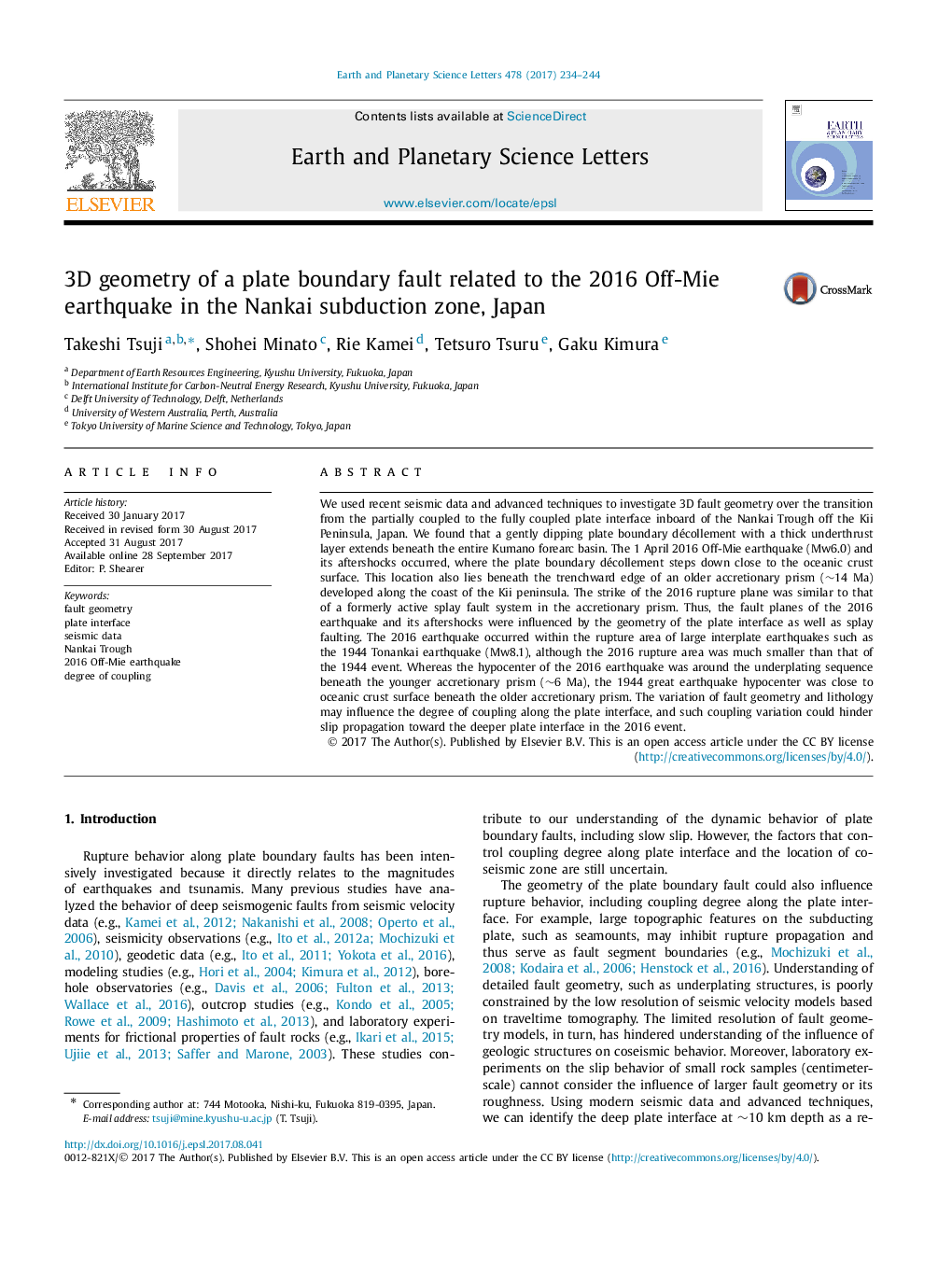| کد مقاله | کد نشریه | سال انتشار | مقاله انگلیسی | نسخه تمام متن |
|---|---|---|---|---|
| 5779572 | 1634678 | 2017 | 11 صفحه PDF | دانلود رایگان |

- Low-dip plate boundary décollement is continuous beneath the Kumano forearc basin.
- Décollement soles onto oceanic crust beneath trenchward edge of the older prism.
- Rupture plane of the 2016 Off-Mie earthquake was influenced by fault geometry.
- The aftershock hypocenters align where the décollement soles onto oceanic crust.
- Soling of décollement may hinder slip propagation toward deeper plate interface.
We used recent seismic data and advanced techniques to investigate 3D fault geometry over the transition from the partially coupled to the fully coupled plate interface inboard of the Nankai Trough off the Kii Peninsula, Japan. We found that a gently dipping plate boundary décollement with a thick underthrust layer extends beneath the entire Kumano forearc basin. The 1 April 2016 Off-Mie earthquake (Mw6.0) and its aftershocks occurred, where the plate boundary décollement steps down close to the oceanic crust surface. This location also lies beneath the trenchward edge of an older accretionary prism (â¼14 Ma) developed along the coast of the Kii peninsula. The strike of the 2016 rupture plane was similar to that of a formerly active splay fault system in the accretionary prism. Thus, the fault planes of the 2016 earthquake and its aftershocks were influenced by the geometry of the plate interface as well as splay faulting. The 2016 earthquake occurred within the rupture area of large interplate earthquakes such as the 1944 Tonankai earthquake (Mw8.1), although the 2016 rupture area was much smaller than that of the 1944 event. Whereas the hypocenter of the 2016 earthquake was around the underplating sequence beneath the younger accretionary prism (â¼6 Ma), the 1944 great earthquake hypocenter was close to oceanic crust surface beneath the older accretionary prism. The variation of fault geometry and lithology may influence the degree of coupling along the plate interface, and such coupling variation could hinder slip propagation toward the deeper plate interface in the 2016 event.
Journal: Earth and Planetary Science Letters - Volume 478, 15 November 2017, Pages 234-244